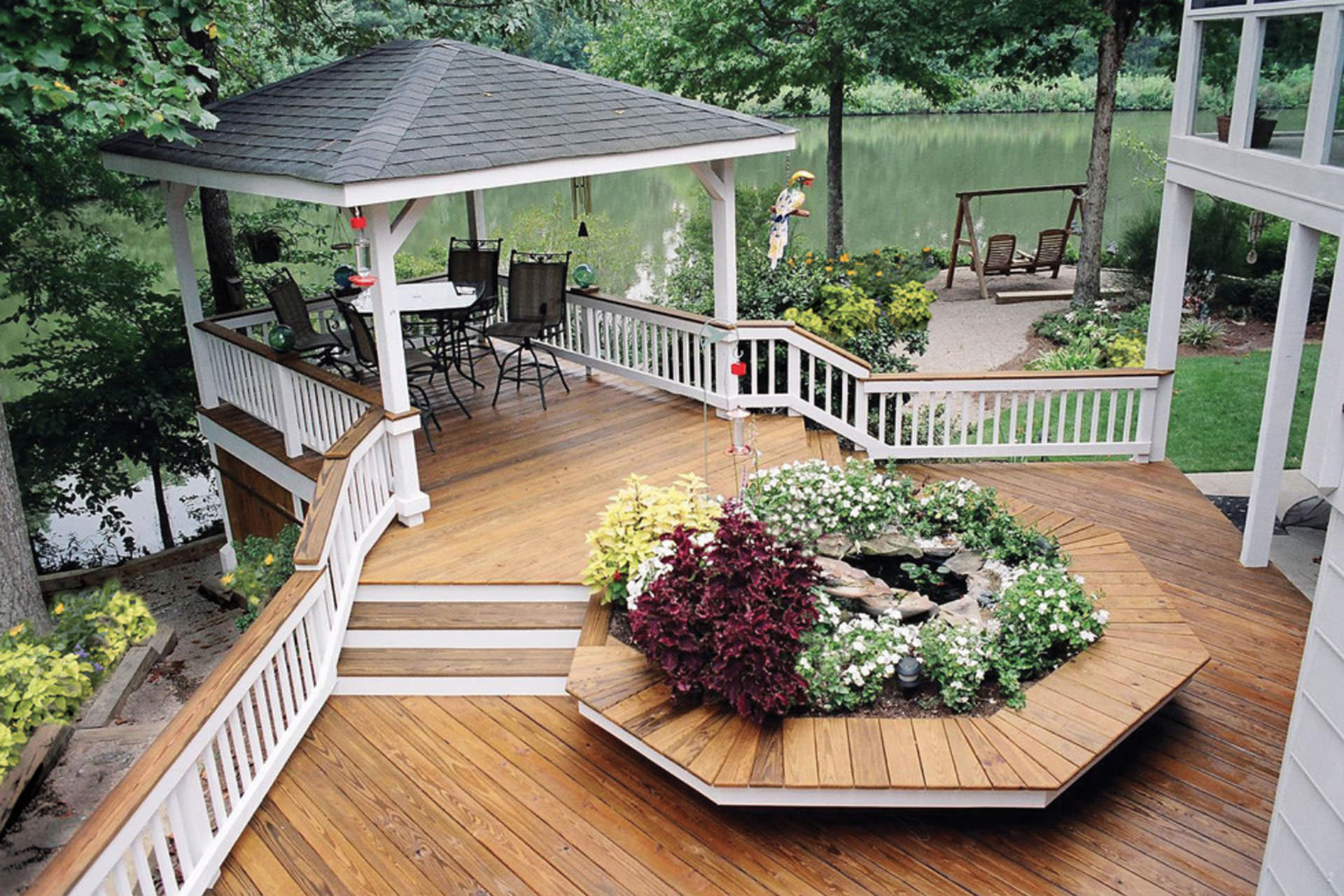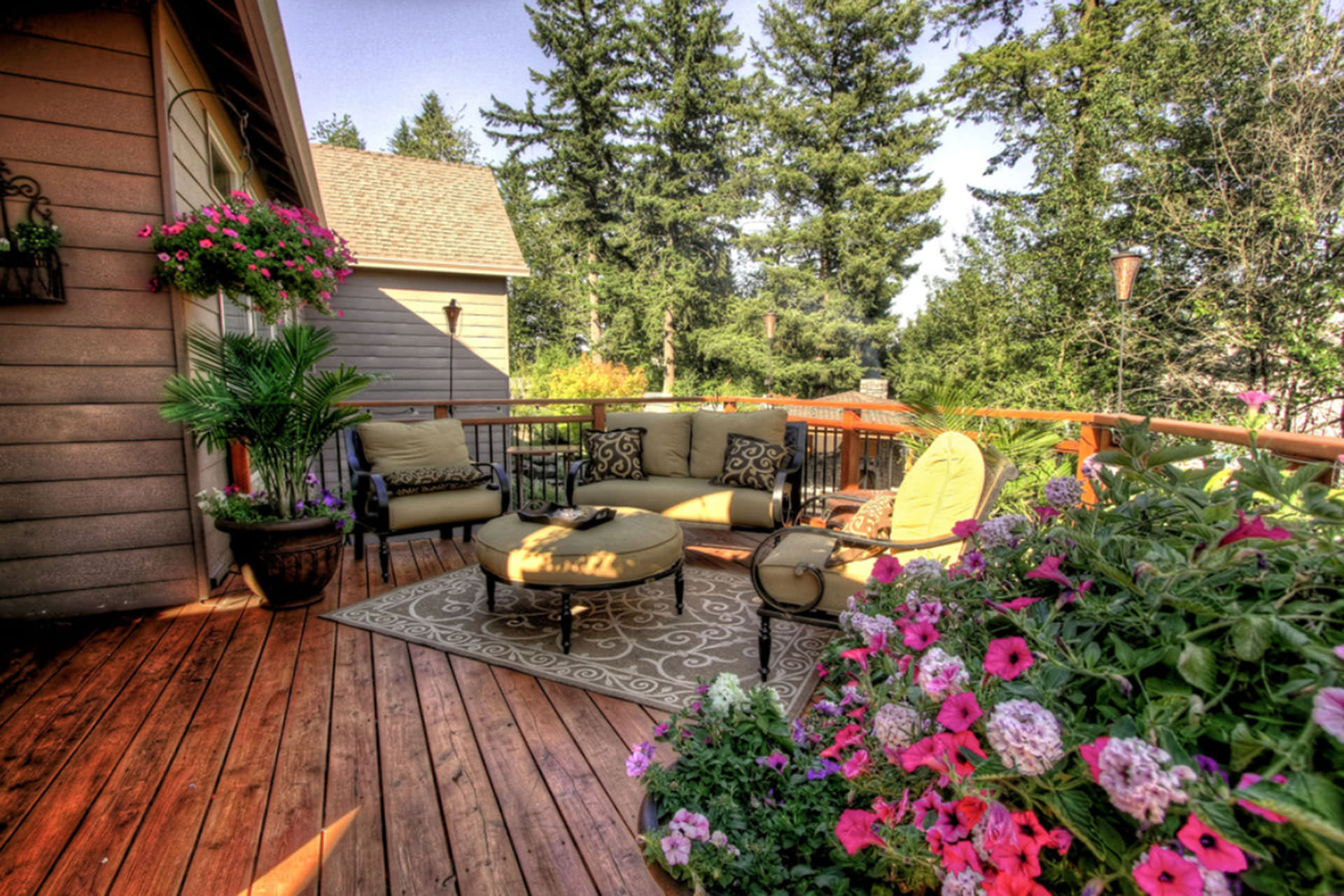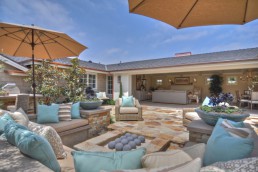Wood, Composite, or PVC: A Guide to Choosing Deck Materials
Adding a deck onto your home not only gives you a finished and polished outdoor area to enjoy, but also adds value and beauty to your home. As you prepare to make this important addition to your home, however, it is important first to have an understanding of the ins and outs of decking, specifically the materials that go into the construction of a deck. Choosing the right deck materials can make a big difference to the longevity of your deck and your enjoyment of it.
Understanding Your Options
A first step for any homeowner building a deck is deciding on the type of material to use. There are six common options across two categories (natural and synthetic). The benefits or pitfalls of each material option lay in the cost, maintenance required, expected longevity, rot and insect resistance, and aesthetics.
Natural Materials:
Pressure-Treated Wood

Pressure-treated wood is wood that has been pre-treated for increased resistance to moisture and the elements. The most common woods that are pressure treated and used for decks include spruce, pine, and fur in Canada, and southern yellow pine in the USA. Manufacturers of this option use copper and a quaternary compound commonly referred to as a “quat” to make this product highly resistant to mold and rot. Pressure-treated wood is an affordable option, although not foolproof in the long term— you will still need to treat your decking with a stain or water repellent upon installation and then once every year. Pressure treated wood leaches the chemicals used in its treatment so be mindful of the toxicity of these chemicals if you have children or pets.
Cedar

Cedar is the most popular natural wood option, thanks to its rich finish and grain and full-bodied color. In addition to its aesthetic value, cedar is also a light wood, meaning that your deck builder or craftsman may be able to create much more elaborate and detailed shapes and constructions than with an option such as composite wood. It’s two times more expensive than pressure-treated wood, so make sure you have room in the budget if you want to go with this warm and lovely wood on your deck. It also requires that it is stained yearly if you don’t want it to turn grey which is it natural and maintenance free look.
Thermally Modified

Thermally modified woods are non-toxic and highly resistant to biological decay. Cooked at high temperatures for extended periods of time (+40hours), resins and sugars are removed from the woods to increase rot resistance. Thermally modified woods are moisture resistant which enable it to hold shape and retain strength for long periods of time. Suppliers, such as EcoVantage provide a 30 year warranty against rot, even with full ground contact. It’s price point falls between cedar and tropical hardwoods.
Tropical Hardwoods

Tropical hardwoods such as ipe, and tigerwood are the most aesthetically appealing decking option. They are very hard, dense, heavy, and durable (Tropical hardwoods are so dense that they require specific stains made for them). In order to prevent these woods from turning a light silvery color, it is recommended that they be stained every year. Tropical hardwoods also require a protective stain preservative applied three months after installation to seal the natural oils that leach out of the wood. These woods, like cedar, are naturally resistant to rot and insects. Tropical hardwoods require a yearly coat of protective materials and are the most expensive but will yield you the most aesthetically impressive deck.
Synthetic Materials:
Composite

Composite decking is comprised of two substances, wood and resin. The wood attempts to give this product a look similar to a natural wood and adds structural support, while the resin adds in durability and weather-resistance. Composite decking is available that mimics the color and grain of almost any natural wood. Composite decking can look artificial to the savvy eye, however, so make sure that you look into this option closely before going with it. The good news is that you will never need to stain or seal composite decking, making it an easy, low-maintenance long-term choice. Buyers should do some research into composite as many homeowners have challenged supplier’s claims of weather and moisture resistance, citing warped panels in a variety of climates. Another downfall of composite materials is the significant heat retention. In warmer climates, many contractors avoid composite decking as it retains an incredible amount of heat, creating a deck that is impossible to walk on barefoot in the daytime.
Cellular PVC

Cellular PVC contains no organic materials such as wood and is made completely from plastic. It is considered in the industry to be the best option of the synthetic materials. It is low maintenance (stain and fade resistant) and has the longest life expectancy with suppliers such as Azek offering lifetime warranties. Remember, no matter how maintenance free any material claims to be, some form of maintenance is required. Like tropical hardwoods in the wood category, cellular pvc is the best and most expensive option of the synthetic materials. Most contractors will argue that although the initial investment up front is the highest, the low-maintenance features and longevity make it the most economical option. Similar to the other synthetic materials, cellular pvc does not have a natural wood look. However, once painted it looks, feels, and sounds like wood when you knock on it. You can also nails and screw into it just like wood.
Comparing the Materials
The following table summarizes the advantages and disadvantages of the deck materials outlined above. Use this information to weigh your options during this essential first stage of the deck building process.
|
Wood Type |
Advantages |
Disadvantages |
|
Pressure-Treated Wood |
|
|
|
Western Red Cedar |
|
|
|
Thermally Modified |
|
|
|
Tropical Hardwoods |
|
|
|
Composite |
|
|
|
Cellular PVC |
|
|
With all of these considerations laid out in this way, you can get a better idea of which deck materials will work best for you. Have you looked into building your own deck at home? Chime in below with some of your own tips on deck materials and your experience with each.
Retractable Solutions for Outdoor Spaces
Please complete the form below to download our free eBrochure.
Price List included
Related Posts
April 7, 2014
The Complete Guide to Patio Materials
April 7, 2014
The Complete Guide To Deck Materials
September 18, 2013




this is super helpful!
This was super helpful material, thank you for your efforts. I live in Arizona, i’m constantly trying to help people buy and build the right dog house that can resist high heat and help protect their dogs.
Super grateful, best of regards.